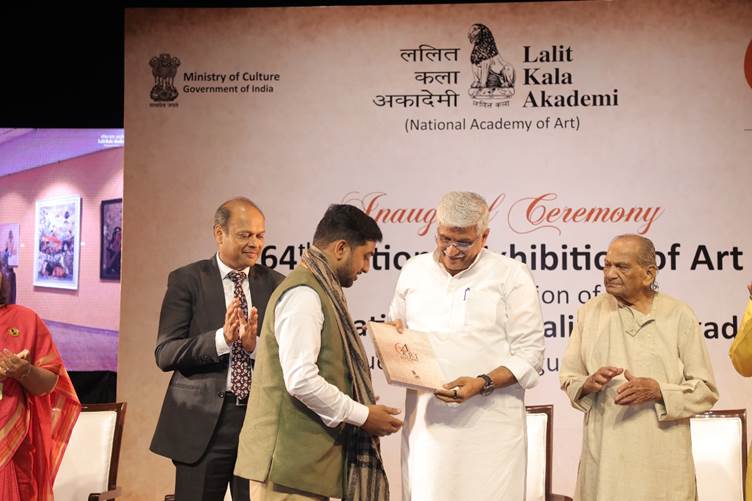New Delhi — The Lalit Kala Akademi, India’s national academy of fine arts, has inaugurated the 64th National Art Exhibition, spotlighting some of the country’s most promising creative voices while introducing new artist-centric initiatives.
The annual exhibition, which has long been considered a landmark platform for contemporary Indian art, brings together a wide spectrum of painters, sculptors, printmakers, and multimedia artists. This year’s edition goes a step further, placing additional emphasis on mentoring and nurturing younger talent, ensuring that India’s next generation of artists is given equal space alongside established names.
Spread across multiple galleries, the exhibition displays works that range from traditional techniques to experimental installations, reflecting the evolving art landscape in India. Curators noted that the diversity of mediums and themes offers a vivid portrayal of how artists are responding to social change, environmental concerns, and personal identity.
For the Akademi, the launch also reaffirms its commitment to democratising art. Organisers have introduced interactive elements that invite visitors to engage with artworks in more participatory ways, breaking down barriers that often separate artists from audiences.
Alongside the physical exhibition, the Akademi has announced a series of workshops and artist talks designed to bring creators into dialogue with students, collectors, and the public. This educational dimension underscores the Akademi’s mission to function not just as a presenter of art, but as a facilitator of cultural conversation.
Officials highlighted that this year’s exhibition arrives at a pivotal time for the Indian art market, which is seeing both domestic growth and increasing global recognition. By foregrounding younger artists and expanding outreach, the Akademi hopes to further anchor India’s cultural presence internationally.
The exhibition is now open in New Delhi and will continue to welcome visitors over the coming weeks. For audiences, it promises both aesthetic enrichment and a glimpse into the future of Indian creativity.







